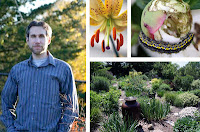Plants do math - so say the scientists

Excerpts below. Full story at http://www.bbc.co.uk/news/health-22991838 Plants have a built-in capacity to do maths, which helps them regulate food reserves at night, research suggests. UK scientists say they were "amazed" to find an example of such a sophisticated arithmetic calculation in biology. Mathematical models show that the amount of starch consumed overnight is calculated by division in a process involving leaf chemicals, a John Innes Centre team reports in e-Life journal. Birds may use similar methods to preserve fat levels during migration. Discovery.com The scientists studied the plant Arabidopsis , which is regarded as a model plant for experiments. Overnight, when the plant cannot use energy from sunlight to convert carbon dioxide into sugars and starch, it must regulate its starch reserves to ensure they last until dawn. Experiments by scientists at the John Innes Centre, Norwich, show that to adjust its starch consumption so p





.JPG)











